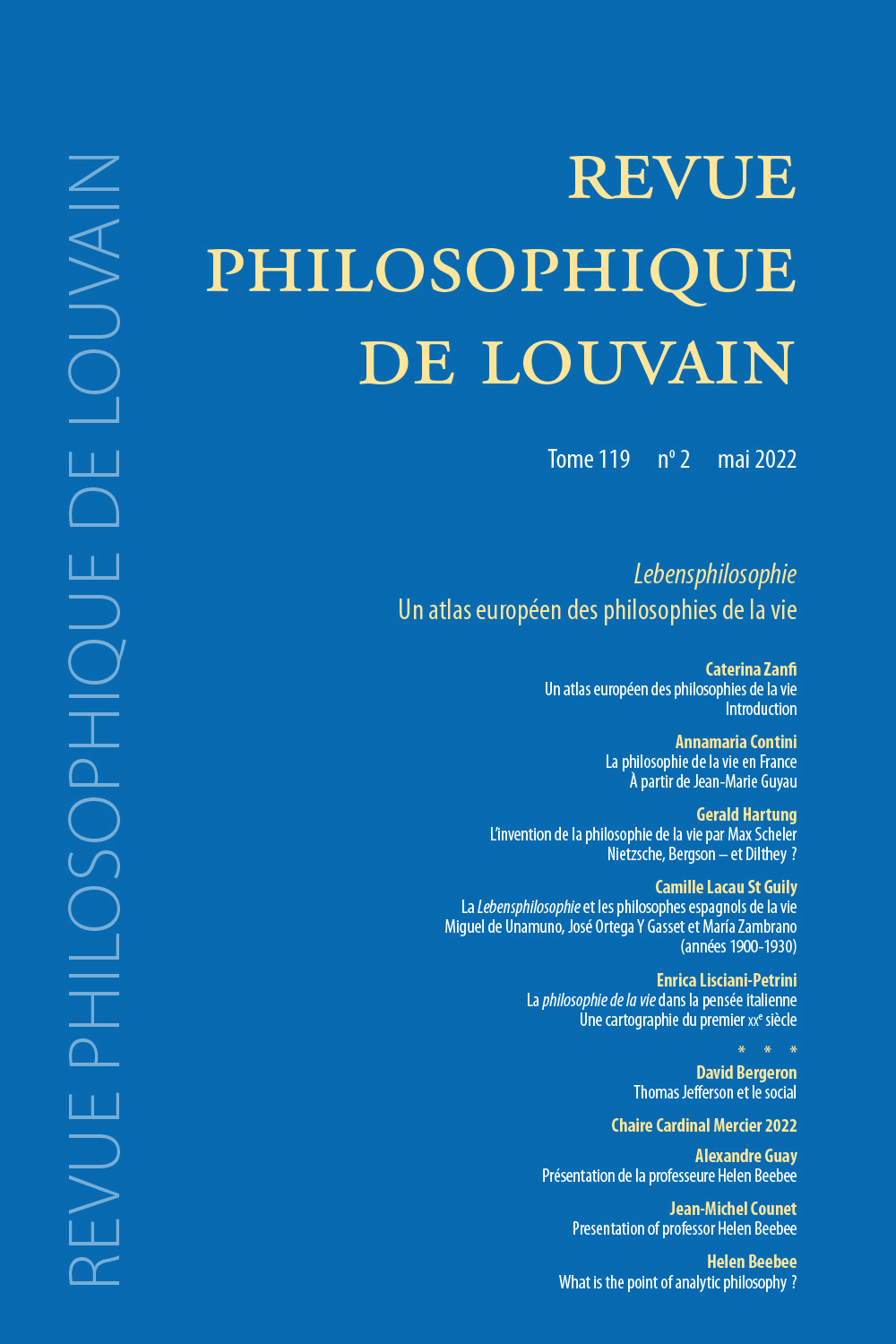 previous article in this issue previous article in this issue | next article in this issue  |

Preview first page |
Document Details : Title: Actes de langage et argumentation Author(s): COOREN, François Journal: Revue Philosophique de Louvain Volume: 95 Issue: 3 Date: août 1997 Pages: 517-544 DOI: 10.2143/RPL.95.3.541861 Abstract : Partant du modèle sémio-narratif de Greimas, cet article propose de reconceptualiser la théorie orthodoxe des actes de langage (Austin, Searle, Vanderveken) en analysant l’action comme une transformation d’états par circulation d’objets-médiation. À partir de cette analyse, l’A. présente une nouvelle typologie des actes illocutoires basée sur les modes d’objets véhiculés («pouvoir faire», «devoir faire», etc.) ainsi que sur les différentes actions de base exécutées (réflexives ou transitives). Par la suite, il propose un modèle explicatif de la forme rhétorique des transformations perlocutoires, modèle qui tend à démontrer que l’argumentation consiste à faire véhiculer un objet-médiation bien particulier, soit le «vouloir faire». La rhétorique devient dès lors une stratégie qui consiste à faire accepter des objets discursifs en créant de nouvelles médiations avec des objets préalablement valorisés ou dévalorisés, un phénomène que l’on peut comparer à une véritable contamination des valeurs. This article proposes to reconceptualize the orthodox theory of speech acts (Austin, Searle, Vanderveken) from a semio-narrative perspective (Greimas) by analyzing action as a transformation of state that mobilizes objects of mediation. From this analysis, the A. presents a new typology of illocutionary acts based on the different objects that are mobilized («having to do,» «being able to do,» etc.) as well as the different basic actions executed (reflexive or transitive). Furthermore, he proposes a new model of the rhetorical form of perlocutionary transformations, a model that tends to demonstrate that argumentation consists in circulating a specific object of mediation that semiotics calls a «wanting to do.» Rhetoric is thus presented as a strategy which consists in making the audience accept discursive objects by creating new mediations with objects of value, a phenomenon that can be compared to a genuine contamination of values. |
|


